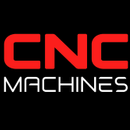Top Ways to Increase Profits for Your Machine Shop and Cut Costs

Top Ways to Increase Profits for Your Machine Shop and Cut Costs
Running a successful machine shop requires more than just high-quality equipment and skilled labor; it involves strategic management to maximize profits and reduce costs. Whether you are trying to streamline operations or grow your client base, here are the top ways to increase profits for your machine shop while cutting costs.
1. Leads and Sales Are the Cornerstone
Generating consistent leads and sales is the foundation for any successful machine shop. Without a steady flow of clients and projects, it’s challenging to cover costs, let alone grow. To maximize profits, you need to keep your pipeline full of potential customers.
- Invest in Digital Marketing: Create a strong online presence through SEO, social media, and pay-per-click advertising to reach potential customers actively looking for your services.
- Use Lead Management Software: Implement a system to track and manage leads efficiently. This ensures that you follow up on every opportunity and convert potential clients into paying customers.
- Offer Value-Added Services: Providing additional services, such as design assistance or faster turnaround times, can help you differentiate from the competition and attract higher-paying clients.
2. Keep It Simple
Complex processes can lead to inefficiencies and higher costs. Simplify your machine shop’s operations by streamlining workflows, eliminating unnecessary steps, and focusing on core competencies.
- Standardize Operations: Create standard operating procedures (SOPs) for every aspect of your business, from machining processes to customer service. This will help reduce errors and improve consistency.
- Limit Customization: While custom projects can be lucrative, too much customization can lead to higher costs and complexity. Focus on offering standard services with some customization options to keep processes simple.
- Optimize Inventory Management: Keeping too much inventory on hand can tie up capital and increase storage costs. Implement inventory management systems to ensure you have the right materials on hand without overstocking.
3. Have Systems in Place
Establishing systems for every aspect of your machine shop is key to reducing costs and improving efficiency. Systems help to automate tasks, reduce errors, and streamline workflows, freeing up time for more strategic work.
- Use ERP Software: Implementing an ERP (Enterprise Resource Planning) system can integrate all aspects of your business—from inventory to accounting to production—under one platform. This reduces manual entry, improves accuracy, and saves time.
- Automate Repetitive Tasks: Look for areas where automation can take over mundane or repetitive tasks, such as data entry, invoicing, or even parts of the machining process. Automation reduces labor costs and increases efficiency.
- Track Key Metrics: Set up systems to track your machine shop’s key performance indicators (KPIs), such as machine utilization rates, production cycle times, and material waste. Having this data at your fingertips allows you to make informed decisions to cut costs and boost profits.
4. Train and Grow Knowledge at Every Level
Constant learning and improvement are essential to staying competitive in the machine shop industry. Investing in the training and development of your team helps improve productivity, reduce errors, and foster innovation.
- Offer Ongoing Training: Provide regular training for your team to improve their skills and keep up with the latest technologies and machining techniques. Well-trained employees can work more efficiently and with fewer errors, reducing costly mistakes.
- Encourage Cross-Training: Cross-train your staff to handle multiple roles. This increases flexibility in your workforce and allows you to adapt to changing workloads more easily.
- Leverage AI and Automation: Integrate AI and automation tools to help reduce the knowledge gap, so your machinists can focus on problem-solving and quality control. AI tools can provide real-time suggestions and insights that simplify decision-making on the shop floor.
5. Document and Organize
One of the most overlooked ways to cut costs and improve profitability is through proper documentation and organization. When every aspect of your business is well-documented and organized, it’s easier to identify inefficiencies, manage workflows, and scale operations.
- Document SOPs: Create detailed documentation for all processes and procedures. This allows for easier training, ensures consistency, and reduces errors that can occur when there is a lack of clear guidelines.
- Organize Your Workspace: An organized workspace leads to improved efficiency. Implement a system for organizing tools, materials, and documents so that everything is easily accessible when needed.
- Centralize Communication: Use a centralized communication platform to keep everyone on your team updated and informed. This reduces miscommunication and ensures that important information doesn’t get lost.
6. Focus on Client Relationships
Building and maintaining strong relationships with your clients is crucial for long-term success and profitability. Happy clients are more likely to return for future projects and recommend your machine shop to others.
- Deliver Consistent Quality: Ensure that every job is completed to a high standard. Consistent quality builds trust with your clients and encourages repeat business.
- Provide Exceptional Customer Service: Responsive and proactive customer service can set you apart from your competitors. Regularly update clients on their projects, address concerns quickly, and make sure they feel valued.
- Create Long-Term Partnerships: Build partnerships with key clients by offering incentives for repeat business, such as discounted rates or faster delivery times.
Conclusion
Increasing profits and cutting costs in your machine shop comes down to having the right strategies and systems in place. By focusing on leads and sales, keeping processes simple, investing in training, and documenting everything, you can streamline operations, improve efficiency, and grow your business. A well-run machine shop not only operates more cost-effectively but also delivers higher-quality work that keeps clients coming back.


